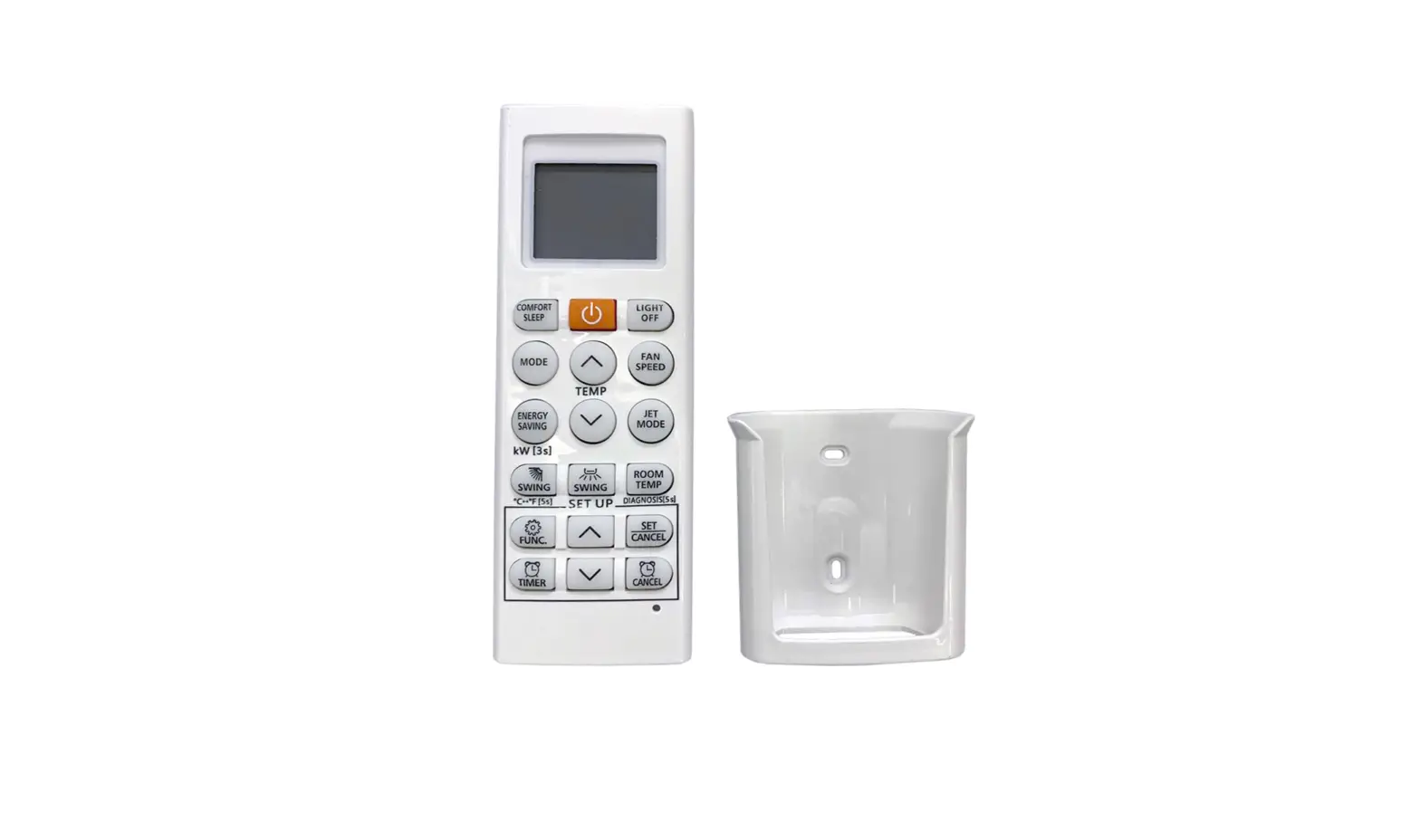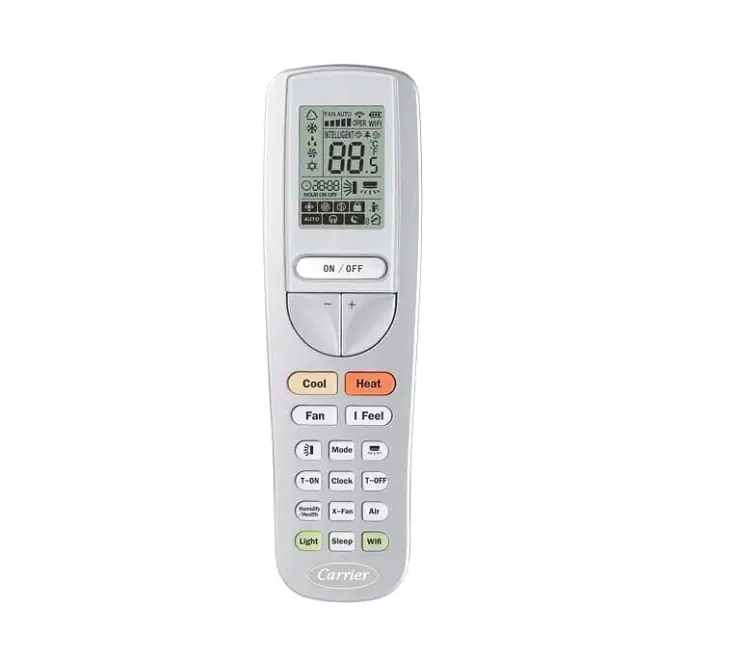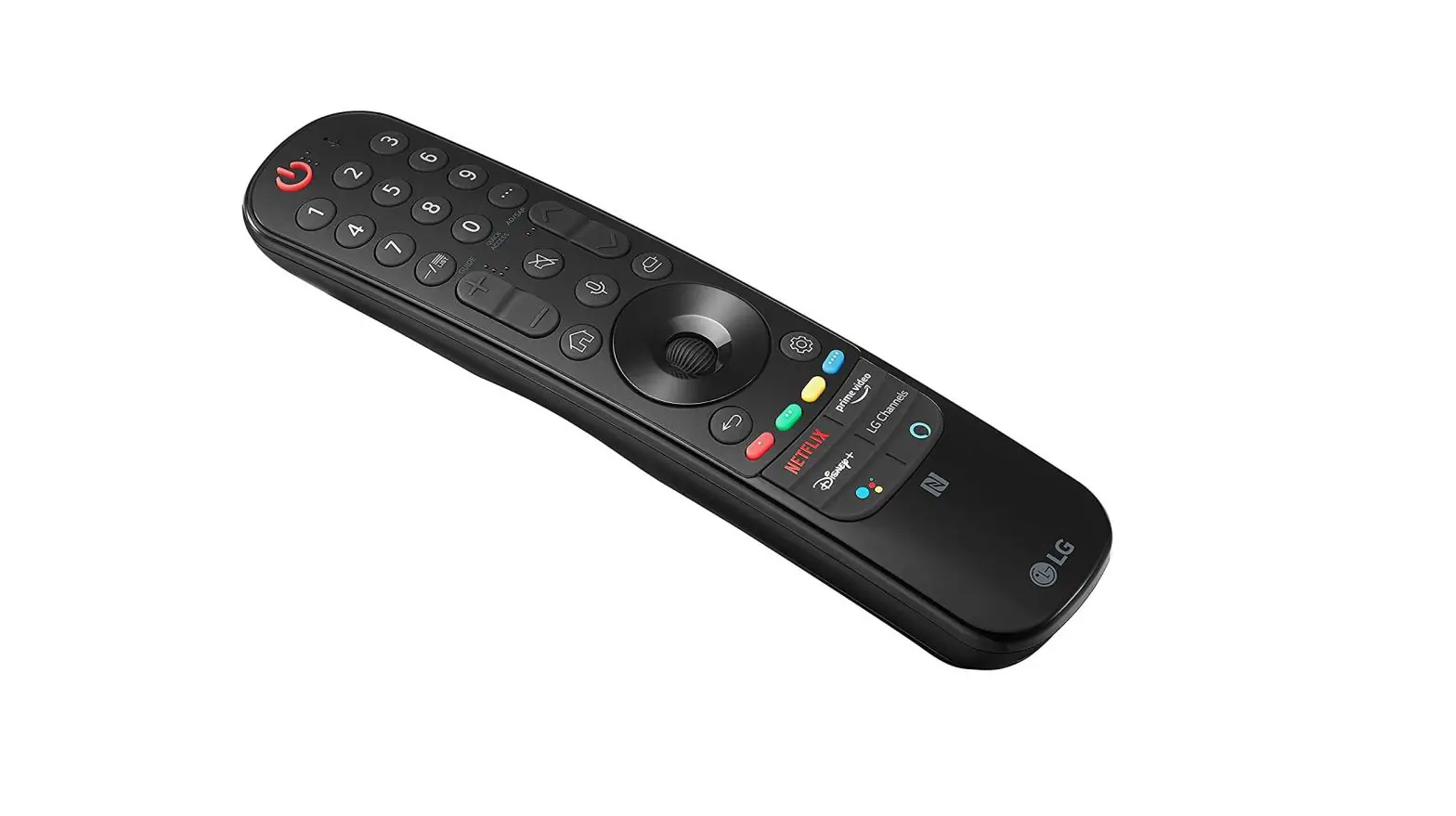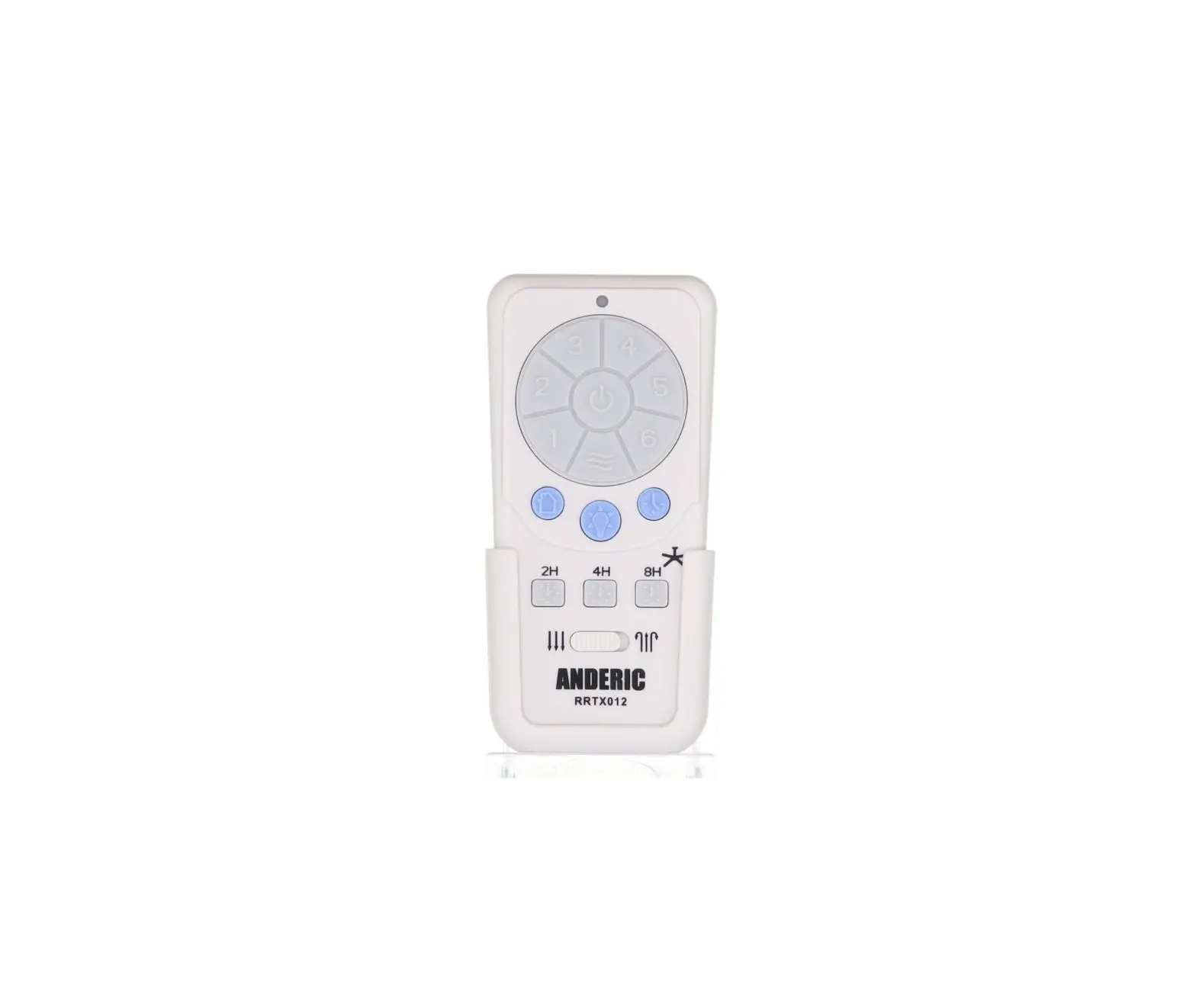LG Air Conditioner Remote Control Manual
 LG Air Conditioner Remote
LG Air Conditioner Remote
For a full instruction guide on the LG air conditioner and remote, please check this guide:
LG Wall-Mounted Air Conditioner Instructions and Remote Button Help
Using Wireless Remote Control
You can operate the air conditioner more conveniently with the remote control.


NOTE: Some functions may not be supported, depending on the model.• •* buttons may be changed according to the type of model.• •Press the SET/CANCEL button to operate the selected FUNC.
Restarting the Air Conditioner Automatically
When the air conditioner is turned on again after a power failure, this function restores the previous settings.
Disabling Auto Restart
- Open the front cover (Type2) or horizontal vane (Type1).
- Press the ON/OFF button and hold it for 6 seconds, then the unit will beep twice and the lamp will blink twice 4 times.•
- To re-enable the function, press the ON/OFF button and hold it for 6 seconds. The unit will beep twice and the lamp will blink 4 times.

NOTE:
- The feature may be changed according to the type of model.
- If you press and hold the ON/OFF button for 3 – 5 seconds, instead of 6 seconds, the unit will switch to the test operation.
- In the test operation, the unit blows out strong cooling air for 18 minutes and then returns to factory default settings.
Using the Mode Function
This function allows you to select the desired function.
Cooling Only Model

Cooling Mode
- Turn the appliance on.
- Press MODE button repeatedly to select the Cooling Mode is displayed on the display screen.
- Press or button to set the desired temperature.




Using the Fan Speed Function

Using the Air Flow Direction Function
SAFETY INSTRUCTIONS
The following safety guidelines are intended to prevent unforeseen risks or damage from unsafe or incorrect operation of the appliance.
The guidelines are separated into ‘WARNING’ and ‘CAUTION’ as described below.
![]() This symbol is displayed to indicate matters and operations that can cause risk. Read the part with this symbol carefully and follow the instructions in order to avoid risk.
This symbol is displayed to indicate matters and operations that can cause risk. Read the part with this symbol carefully and follow the instructions in order to avoid risk.![]() WARNING
WARNING
This indicates that the failure to follow the instructions can cause serious injury or death.![]() CAUTION
CAUTION
This indicates that the failure to follow the instructions can cause the minor injury or damage to the product.
![]() WARNING
WARNING
To reduce the risk of explosion, fire, death, electric shock, injury or scalding to persons when using this product, follow basic precautions, including the following:
Children in the Household
This appliance is not intended for use by persons (including children) with reduced physical, sensory or mental capabilities, or lack of experience and knowledge, unless they have been given supervision or instruction concerning use of the appliance by a person responsible for their safety. Children should be supervised to ensure that they do not play with the appliance.
Installation
- Do not install the air conditioner on an unstable surface or in a place where there is danger of it falling.
- Contact an authorized service center when installing or relocating the air conditioner.
- Install the panel and the cover of the control box safely.
- Do not install the air conditioner in a place where flammable liquids or gases such as gasoline, propane, paint thinner, etc., are stored.
- Make sure that the pipe and the power cable connecting the indoor and outdoor units are not pulled too tight when installing the air conditioner.
- Use standard circuit breaker and fuse that conform to the rating of the air conditioner.
- Do not input air or gas into the system except with the specific refrigerant.
- Use non-flammable gas (nitrogen) to check for leak and to purge air; using compressed air or flammable gas may cause fire or explosion.
- The indoor/outdoor wiring connections must be secured tightly, and the cable should be routed properly so that there is no force pulling the cable from the connection terminals. Improper or loose connections can cause heat generation or fire.
- Install a dedicated electric outlet and circuit breaker before using the air conditioner.
- Do not connect the ground wire to a gas pipe, a lightning rod, or a telephone ground wire.
Operation
- Be sure to use only those parts listed in the service parts list. Never attempt to modify the equipment.
- Make sure that children do not climb on or hit the outdoor unit.
- Dispose of the batteries in a place where there is no danger of fire.
- Use only the refrigerant specified on the air conditioner label.
- Cut off the power supply if there is any noise, smell, or smoke coming from the air conditioner.
- Do not leave flammable substances such as gasoline, benzene, or thinner near the air conditioner.
- Contact an authorized service center when the air conditioner is submerged by flood waters.
- Do not use the air conditioner for an extended period of time in a small place without proper ventilation.
- In the event of a gas leak (such as Freon, propane gas, LP gas, etc.) ventilate sufficiently before using the air conditioner again.
- To clean the interior, contact an authorized service center or dealer.
- Using harsh detergents may cause corrosion or damage to the unit.
- Be sure to ventilate sufficiently when the air conditioner and a heating appliance such as a heater are used simultaneously
- Do not block the inlet or outlet of air flow.
- Do not insert hands or other objects through the air inlet or outlet while the air conditioner is operating.
- Make sure that the power cable is neither dirty, loose, nor broken.
- Never touch, operate, or repair the air conditioner with wet hands.
- Do not place any objects on the power cable.
- Do not place a heater or other heating appliances near the powercable.
- Do not modify or extend the power cable. Scratches or peeling insulation on the power cables may result in fire or electric shock, and should be replaced.
- Cut off the power supply immediately in the event of a blackout or a thunderstorm.
- Take care to ensure that power cable could not be pulled out or damaged during operation.
- Do not touch refrigerant pipe or water pipe or any internal parts while the unit is operation or immediately after operation.
Maintenance
- Do not clean the appliance by spraying water directly onto the product.
- Before cleaning or performing maintenance, disconnect the power supply and wait until the fan stops.
Technical Safety
- Installation or repairs made by unauthorized persons can pose hazards to you and others.
- The information contained in the manual is intended for use by a qualified service technician who is familiar with the safety procedures and equipped with the proper tools and test instruments.
- Failure to read and follow all instructions in this manual can result in equipment malfunction, property damage, personal injury and/or death.
- The appliance shall be installed in accordance with national wiring regulations.
- When the power cord is to be replaced, the replacement work shall be performed by authorized personnel using only genuine replacement parts.
- This appliance must be properly grounded to minimize risk of electric shock.
- Do not cut or remove the grounding prong from the power plug.
- Attaching the adapter ground terminal to the wall receptacle cover screw does not ground the appliance unless the cover screw is metal, uninsulated, and the wall receptacle is grounded through house wiring.
- If you have any doubt whether the air conditioner is properly grounded, have the wall receptacle and circuit checked by a qualified electrician.
- The refrigerant and insulation blowing gas used in the appliance require special disposal procedures. Consult a service agent or a similarly qualified person before disposing of them.
- If the supply cord is damaged, it must be replaced by the manufacturer or its service agents or similarly qualified person in order to avoid a hazard.
![]() CAUTION
CAUTION
To reduce the risk of minor injury to persons, malfunction, or damage to the product or property when using this product, follow basic precautions, including the following:
Installation
- Do not install the air conditioner in an area where it is directly exposed to sea wind (salt spray).
- Install the drain hose properly for the smooth drainage of water condensation.
- Exercise caution when unpacking or installing the air conditioner.
- Do not touch the leaking refrigerant during installation or repair.
- Transport the air conditioner with two or more people or use a forklift.
- Install the outdoor unit such that it is protected from direct sunlight.
- Do not place the indoor unit in a place where it is directly exposed to sunlight via the windows.
- Safely dispose of packing materials such as screws, nails or batteries using proper packaging after installation or repair.
- Install the air conditioner in a place where the noise from the outdoor unit or the exhaust fumes will not inconvenience the neighbors. Failure to do so may result in conflict with the neighbors.
Operation
- Remove the batteries if the remote control is not to be used for an extended period of time.
- Make sure that the filter is installed before operating the air conditioner.
- Be sure to check if there is a refrigerant leak after installing or repairing the air conditioner.
- Do not place any object on the air conditioner.
- Never mix different types of batteries, or old and new batteries for the remote control.
- Do not let the air conditioner run for a long time when humidity is very high or when a door or a window has been left open.
- Stop using the remote control if there is a fluid leak in the battery. If your clothes or skin are exposed to the leaking battery fluid, wash off with clean water.
- Do not expose people, animals, or plants to the cold or hot wind from the air conditioner for extended periods of time.
- If the leaking battery fluid has been swallowed, wash off the inside of the mouth thoroughly and consult a doctor.
- Do not drink the water drained from the air conditioner.
- Do not use the product for special purposes, such as preserving foods, works of art, and etc. It is an air conditioner for consumer purposes, not a precision refrigeration system. There is risk of damage or loss of property.
- Do not recharge or disassemble the batteries.
Maintenance
- Never touch the metal parts of the air conditioner when removing the air filter.
- Use a sturdy stool or ladder when cleaning, maintaining, or repairing the air conditioner at a height.
- Never use strong cleaning agents or solvents when cleaning the air conditioner or spray water. Use a smooth cloth
Questions about your LG Air Conditioner Remote Control ? Post in the comments!
Other LG AIR Conditioners Manuals:
- LG Air Conditioner Owner’s Manual
- LG COV34636805 Air Conditioner Owner’s Manual
- LG W051CS SSF Air Conditioner Owner’s Manual
FAQS
What universal remote is good for technics home stereo receiver?
The GE 33712 remote works great with receivers and other devices as well, including smart tv’s and streaming devices.
Will this work with iCraig tower C1005015167?
iCraig is not listed on the code chart but most manufacturers will reuse portions of their codes with alternate models. We recommend that you try the Code Search Method. This method will search through the codes stored in this remote to possibly find a code from an alternate brand that will offer full or partial functionality with your devic
Will the number pad work with newer samsung 4k or 8k tv’s that have the voice remote, the voice remote doesnt have a number pad?
This remote is pre-programmed for Samsung TV’s but we haven’t tested it against the voice remote controlled TV’s as of yet.
What do the buttons on the air conditioner mean?
High Heat (Loud Air) – High Cool (Dry Air) – Medium Heat (Moderate Air) – Low Heat (Quiet Air) – Low Cool (Humid Air)
Which mode is best for AC in summer?
The best way to deal with such unpredictable weather is to keep your air conditioners in ‘Auto mode. ‘ The AC will automatically set the temperature and fan speed depending on the room temperature.
What does the raindrop symbol mean on air conditioner?
Not to be confused with the cool mode, the dry mode is usually represented by the symbol of a water drop. Even though it uses a liquid symbol, the dry mode is a function that reduces humidity in a room’s air while still blowing cool air.
Is the AC button for heat?
So, should you run the heat in your car with the AC on? The answer is yes. The air conditioning system in your car is designed to be used in conjunction with cold air and warm air. When you have your AC on, it helps to dehumidify the incoming air which makes it dryer.
What is heat mode in AC?
Heat Mode. This is the opposite of the Cool Mode. In this mode, the AC warms your room to the temperature you set on the AC remote and then maintains that temperature. Fan Mode
What is best temperature for AC?
According to the Department of Energy1, 78° Fahrenheit is the sweet spot for air conditioners to balance energy savings and comfort when people are at home and need cooling.
Which AC mode is best in rainy season?
However, during monsoons humidity level sometimes extends the recommended range. Therefore, it is advisable to run your AC in dry mode. Dry mode helps in extracting moisture thereby removing extra humidity from the environment. The room Air Conditioner product has a dry mode on remote controllers.
Why is my AC not heating?
Incorrect temperature settings, clogged air filters, ice build-up, broken fans, electricity-related issues, and ductwork leaks – all these things can make your air conditioner stop heating. Bear in mind that your unit can also go into defrost mode; during this time, it won’t be able to heat.
What do the symbols on my thermostat mean?
The plus and minus symbols are used to raise or lower the temperature in a digital thermostat. Explain that a plus symbol will increase the temperature while a minus symbol will decrease it.
Is the AC button for heat?
yes. The air conditioning system in your car is designed to be used in conjunction with cold air and warm air. When you have your AC on, it helps to dehumidify the incoming air which makes it dryer.
What is monsoon comfort in LG AC?
The technology detects the room temperature and adjusts the power necessary for optimum room temperature saving up to 36% of energy.
What is Hot & cold AC?
As the name suggests, a hot and cold AC works in all weathers by giving you instant cooling in summers and keeping you warm and comfortable during winters. So, it is like a one-time-investment for all your weather needs.

LG Air Conditioner Remote Control Manual
Click to Read More LG Manuals
www.LG.com





